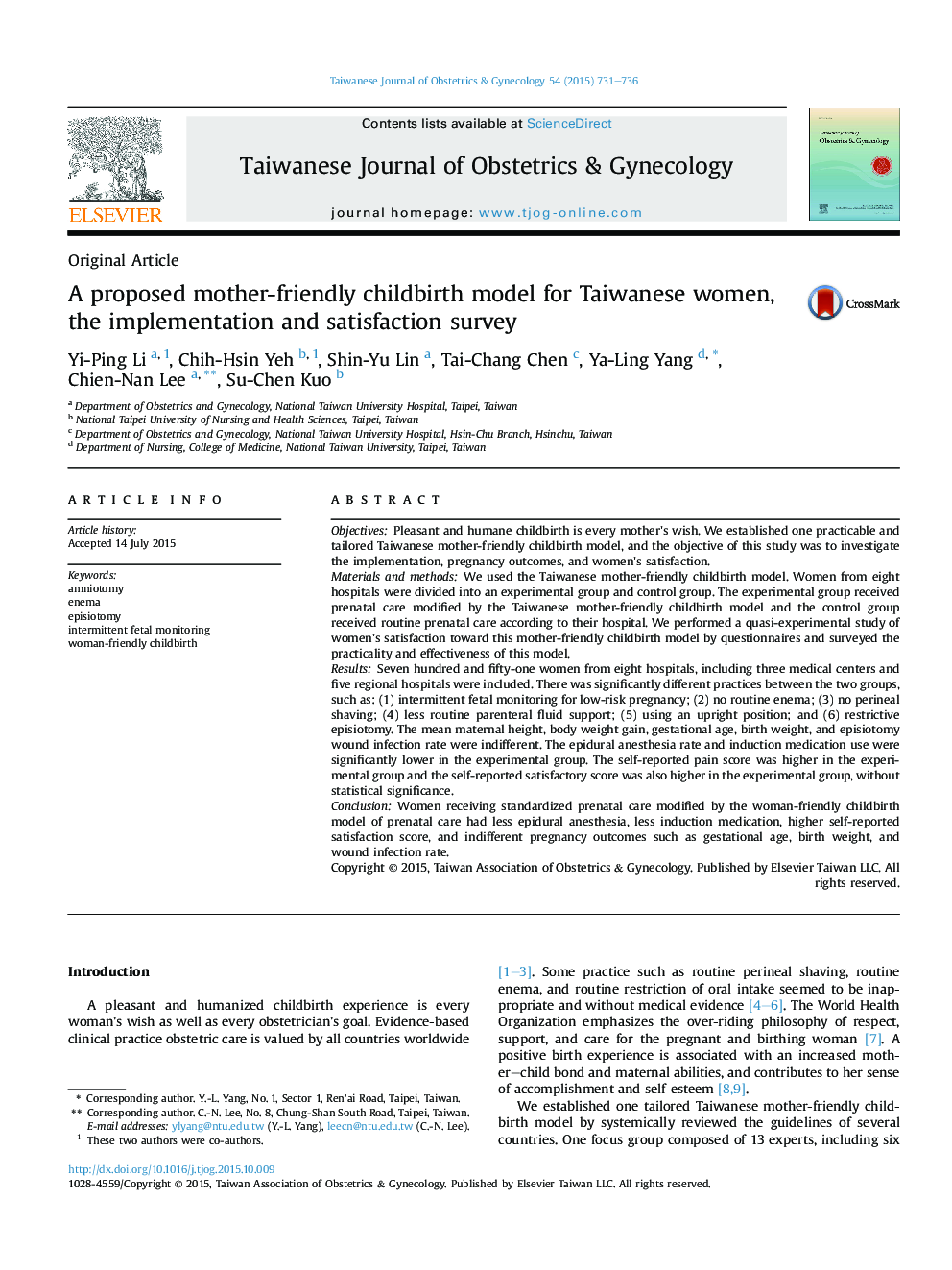| Article ID | Journal | Published Year | Pages | File Type |
|---|---|---|---|---|
| 3975246 | Taiwanese Journal of Obstetrics and Gynecology | 2015 | 6 Pages |
ObjectivesPleasant and humane childbirth is every mother's wish. We established one practicable and tailored Taiwanese mother-friendly childbirth model, and the objective of this study was to investigate the implementation, pregnancy outcomes, and women's satisfaction.Materials and methodsWe used the Taiwanese mother-friendly childbirth model. Women from eight hospitals were divided into an experimental group and control group. The experimental group received prenatal care modified by the Taiwanese mother-friendly childbirth model and the control group received routine prenatal care according to their hospital. We performed a quasi-experimental study of women's satisfaction toward this mother-friendly childbirth model by questionnaires and surveyed the practicality and effectiveness of this model.ResultsSeven hundred and fifty-one women from eight hospitals, including three medical centers and five regional hospitals were included. There was significantly different practices between the two groups, such as: (1) intermittent fetal monitoring for low-risk pregnancy; (2) no routine enema; (3) no perineal shaving; (4) less routine parenteral fluid support; (5) using an upright position; and (6) restrictive episiotomy. The mean maternal height, body weight gain, gestational age, birth weight, and episiotomy wound infection rate were indifferent. The epidural anesthesia rate and induction medication use were significantly lower in the experimental group. The self-reported pain score was higher in the experimental group and the self-reported satisfactory score was also higher in the experimental group, without statistical significance.ConclusionWomen receiving standardized prenatal care modified by the woman-friendly childbirth model of prenatal care had less epidural anesthesia, less induction medication, higher self-reported satisfaction score, and indifferent pregnancy outcomes such as gestational age, birth weight, and wound infection rate.
